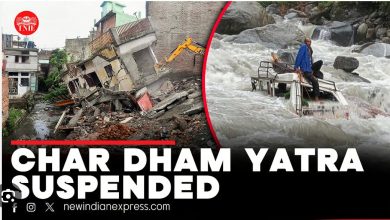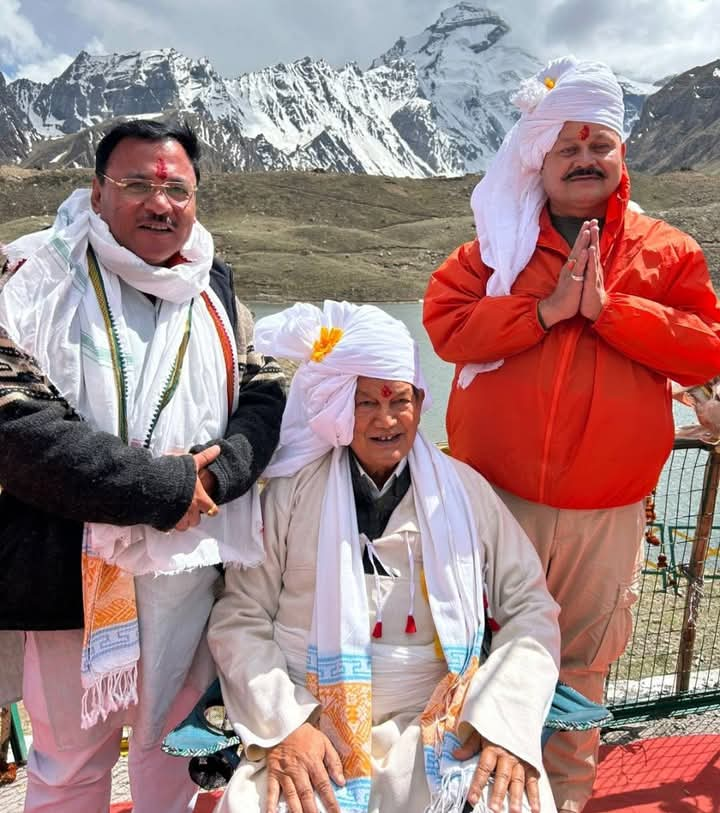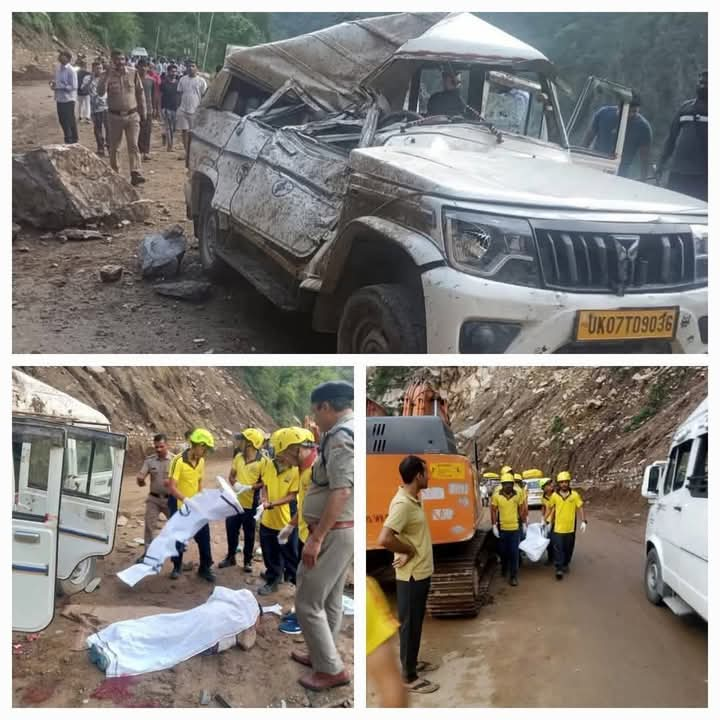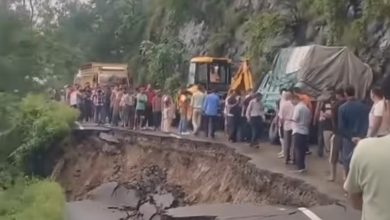9th report of Uttarakhand Disaster & Accident Synopsis (UDAS). Only 15 structures have been built in Joshimath after the claim to built 2000 living structures by the state govt.
Lands subsidence in Barinath after Joshimath, several houses develop cracks

Dehradun-based think tank SDC Foundation is releasing reports on major natural calamities and accidents in Uttarakhand on a monthly basis.
In this sequence, SDC released its ninth report and sixth of this year for the month of June 2023.
According to SDC founder Anoop Nautiyal, the purpose of the Uttarakhand Disaster and Accident Synopsis (UDAS) report is the documentation and compilation of major disasters and accidents that occur in the state of Uttarakhand throughout the month. The report is based on news reports published in credible Hindi and English newspapers and news portals.
SDC hopes that the monthly UDAS reports will help the political leadership, policy makers, officials, researchers, educational institutions, civil society organisations and media houses in Uttarakhand.
Along with being an impetus for change, UDAS could be of use in the development of policies for the reduction of losses due to accidents and disasters in Uttarakhand.
The JUNE 2023 UDAS Report includes the prominent incidents in Joshimath due to land subsidence. Despite the arrival of the monsoon, the report mentions the concerns of the affected people due to the lack of adequate arrangements for their rehabilitation.
The report highlights the death of 10 people in a road accident in Pithoragarh, consecutive avalanches in the high Himalayan regions, the death of 400 goats due to a lightning strike in Bageshwar, the occurrence of cracks in houses in Mastadi village of Uttarkashi, the leaning of Gopinath Temple in Gopeshwar, and the occurrence of cracks in several buildings during reconstruction work in Badrinath.
The UDAS Report prominently includes information about the ongoing Joshimath land subsidence.
According to various reports, cracks have appeared in more than 868 houses in Joshimath.
Despite the proximity of the monsoon, the lack of adequate arrangements for the affected people has raised serious concerns. And despite claims of constructing 2,000 temporary shelters, only 15 structures of this kind have been built so far. The report also mentions the resumption of construction work on the Helang-Marwari Bypass, despite the opposition by the citizens of Joshimath. On June 11, people protested in Joshimath against the commencement of construction on this bypass. The report also highlights the failure to make the landslide issue public and the non-receipt of full compensation.
Multiple places affected by Avalanches
The report includes incidents of avalanches in several places, including the Kedarnath and Hemkund routes, during the month of June. On the morning of June 12, an avalanche occurred behind the Kedarnath Temple, although it was minor and caused no damage. Prior to this, a bigger avalanche occurred on June 8. Earlier, on June 4, an avalanche occurred on the Hemkund Sahib route, where five people were trapped. Four of them were rescued, but one person died. It is noteworthy that prior to this, several avalanche incidents were reported in the high Himalayan regions of the state during the months of May and June.
10 Deaths in a Road Accident
A major road accident occurred in the state during the month of June, which was included in the UDAS report. The accident occurred on June 22, in the Pithoragarh district and claimed the lives of 10 people. The deceased individuals were traveling to a temple from the Bageshwar district when their vehicle fell into a 500-meter deep gorge. The report also mentions the primary causes of road accidents in Uttarakhand. Additionally, the UDAS Report also mentions the incident on June 25 in Jhuni Pankhutop of the Kapkot Tehsil in the Bageshwar district, where more than 400 goats died due to a lightning strike.
Tilt in Gopinath Temple
After the tilt observed in the Tungnath Temple in the district of Rudraprayag, there is now a tilt in the Gopinath Temple located in the headquarters of Chamoli district. The UDAS Report mentions that the Archaeological Survey of India has been informed about this incident. According to the report, ASI officials have denied the tilt, but mentioned the replacement of some stones in the temple. The UDAS Report also mentions cracks appearing in several houses in the Mastadi village in Uttarkashi district. According to the report, villagers have expressed concerns about land subsidence similar to the one in Joshimath. It is mentioned that after the earthquake in 1991, the village experienced a sense of instability, which has now intensified. A survey of the village was conducted by geologists in 1997, but no further action has been taken since then. Immediate relocation of 30 families is required in this village.
Several buildings at risk in Badrinath
The ongoing construction work on the riverfront under the Badrinath Master Plan has increased the risk of land subsidence. Incidents of land subsidence have been reported in several buildings. This matter has been included in the UDAS Report. Construction work is being carried out up to 75 meters around the Badrinath Temple. The shops and houses of priests have been demolished along the old path to Badrinath. Houses and dharamshalas located on the banks of the river are getting impacted due to land subsidence.
Odisha Model of Disaster Management
Uttarakhand is a highly ecologically sensitive state from the point of view of disasters and natural calamities. Scientists and experts have been continuously raising the possibility of large-scale landslides and earthquakes in the near future. In such a situation, there is a dire need to strengthen the disaster management system, especially in the mountainous region of the state.
SDC expects that the state government in Uttarakhand will study and adopt the Odisha model for disaster management, a model that has also been praised by the United Nations. The Odisha model offers important lessons on strengthening disaster risk governance, investing in preparedness and scenario planning, and spreading greater understanding of disaster risk.
In recent days, The Odisha Disaster Rapid Action Force (ODRAF) had done stellar work in saving many lives in the Balasore train tragedy of June 2. The well prepared and well equipped first responder team had reached the crash site immediately and deployed it’s resources in providing relief and in conducting rescue operations.





